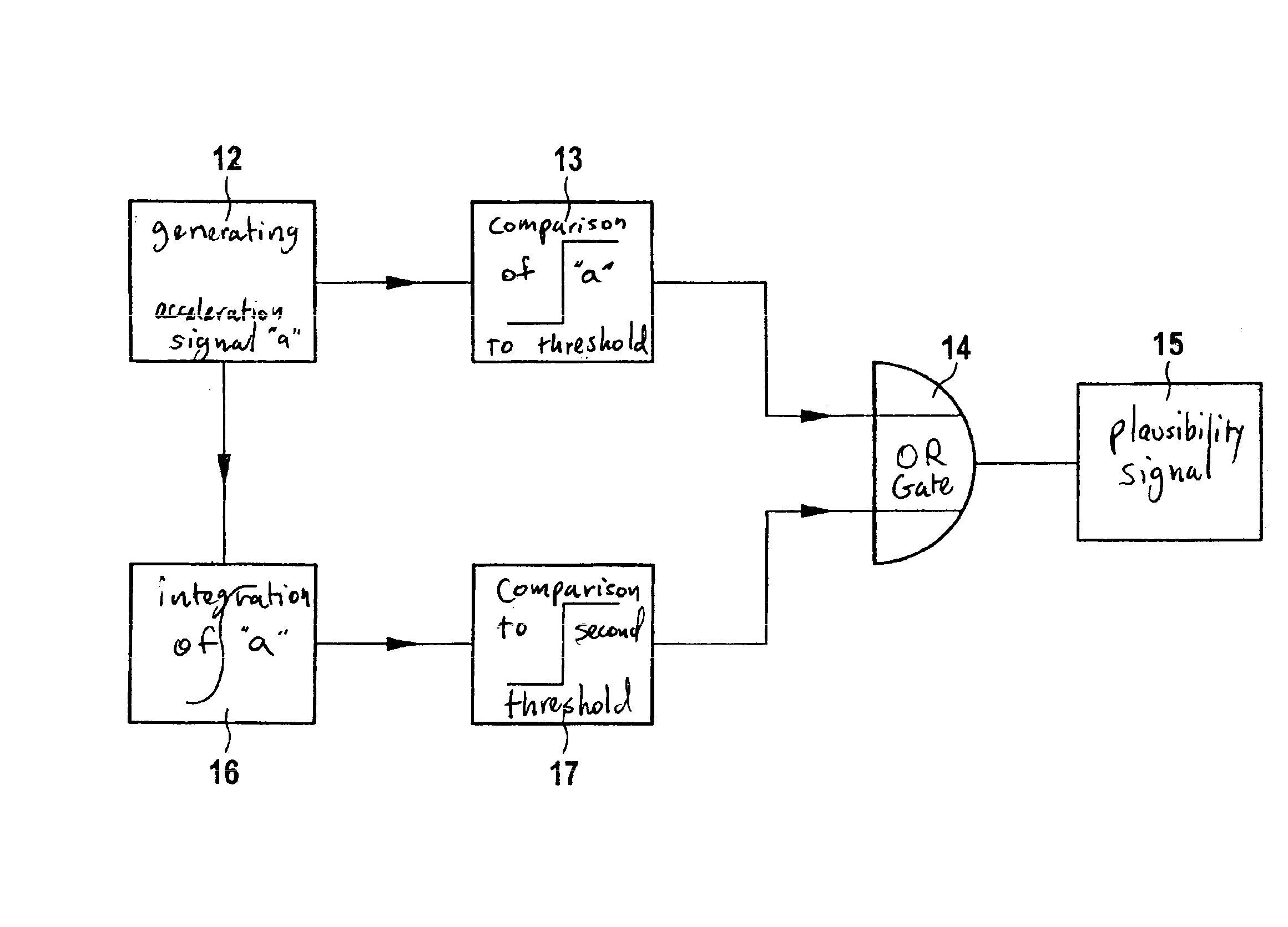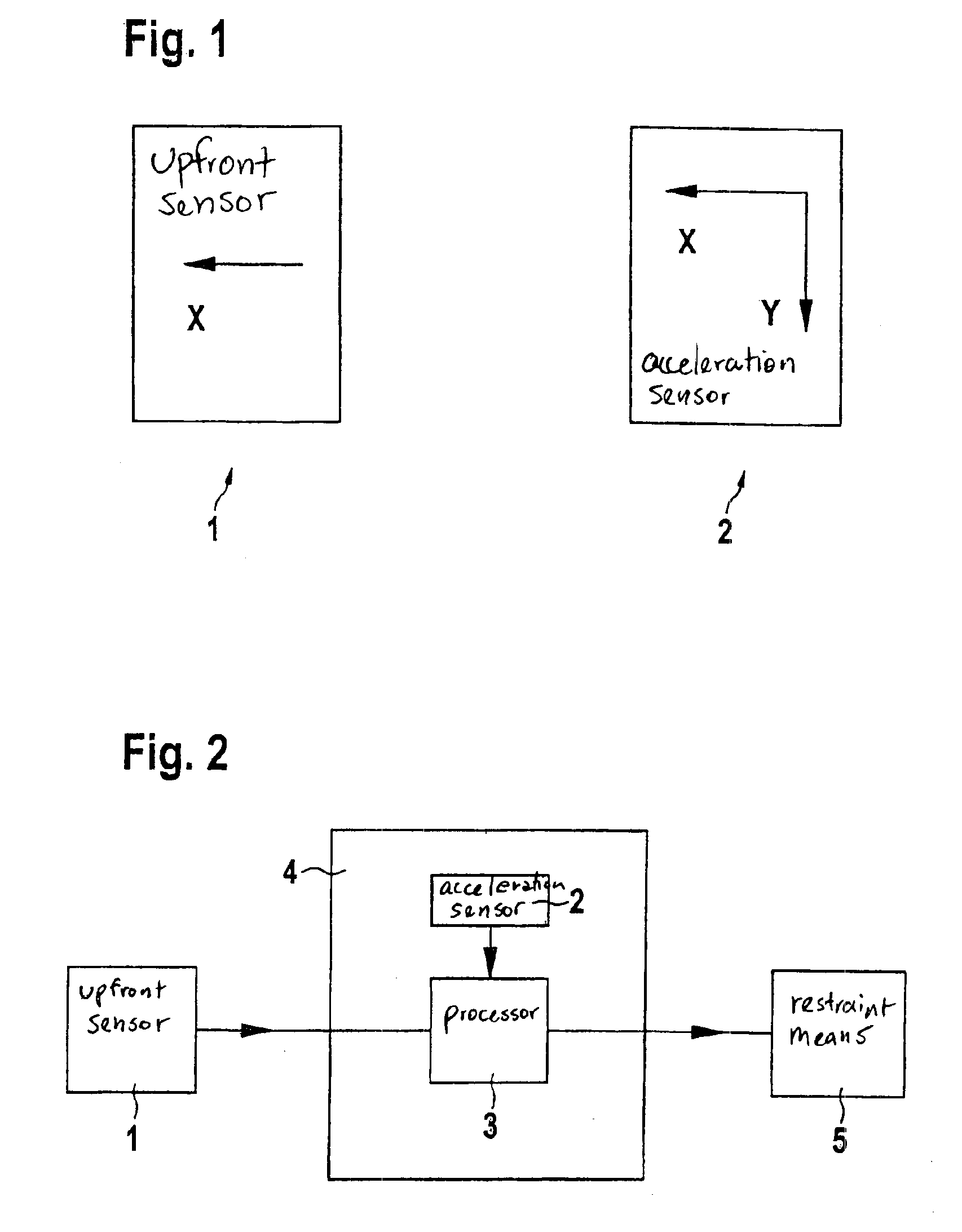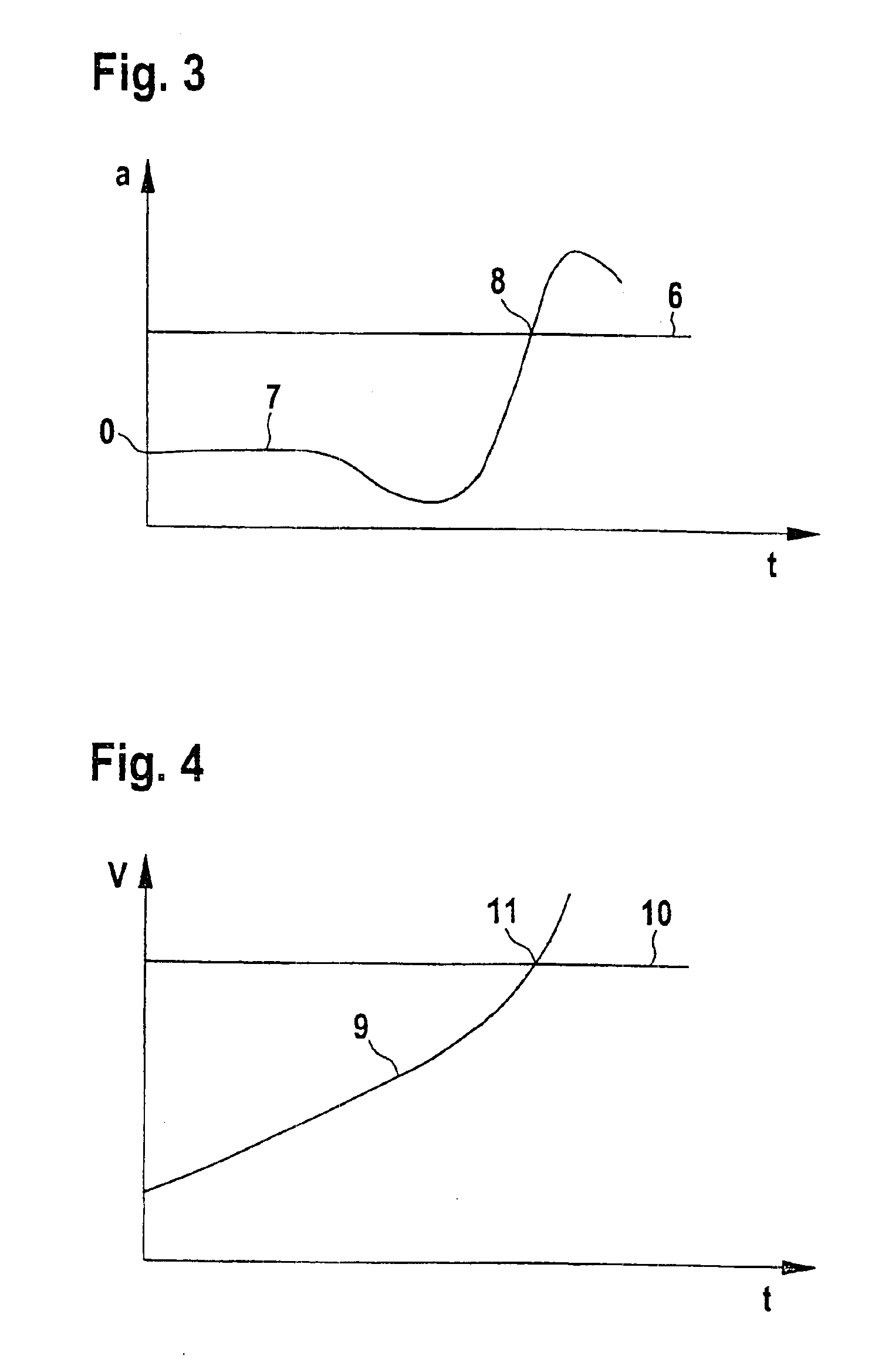System for sensing a head-on collision in a motor vehicle
a head-on collision and head-on technology, applied in the direction of process and machine control, pedestrian/occupant safety arrangement, instruments, etc., can solve the problems of not reaching a satisfactory integrator state, already seen strong acceleration vibration impulses, etc., to increase the reliability of the entire restraint system and increase the reliability of the plausibility decision
- Summary
- Abstract
- Description
- Claims
- Application Information
AI Technical Summary
Benefits of technology
Problems solved by technology
Method used
Image
Examples
Embodiment Construction
[0013]To improve the reliability of a triggering decision of an air bag control device, an additional plausibility sensor may be used in the control device, in addition to the acceleration sensor. However, this plausibility sensor may be used in the control device in a decentralized manner as well, for instance, as an upfront sensor. In this context, appropriate combinations are possible as well. Here, piezoelectric sensors or micromechanical semiconductor sensors may be used as acceleration sensors. However, other sensor types are possible as well.
[0014]The present invention propose a system for sensing a head-on collision in which an upfront sensor generates the plausibility signal. The plausibility signal may be generated as a function of the acceleration signal and the speed signal, that is, the integrated acceleration signal. In the process, a logical OR-operation of the comparisons of the acceleration and speed signal with the respective thresholds may be implemented. In an ex...
PUM
 Login to View More
Login to View More Abstract
Description
Claims
Application Information
 Login to View More
Login to View More - R&D
- Intellectual Property
- Life Sciences
- Materials
- Tech Scout
- Unparalleled Data Quality
- Higher Quality Content
- 60% Fewer Hallucinations
Browse by: Latest US Patents, China's latest patents, Technical Efficacy Thesaurus, Application Domain, Technology Topic, Popular Technical Reports.
© 2025 PatSnap. All rights reserved.Legal|Privacy policy|Modern Slavery Act Transparency Statement|Sitemap|About US| Contact US: help@patsnap.com



